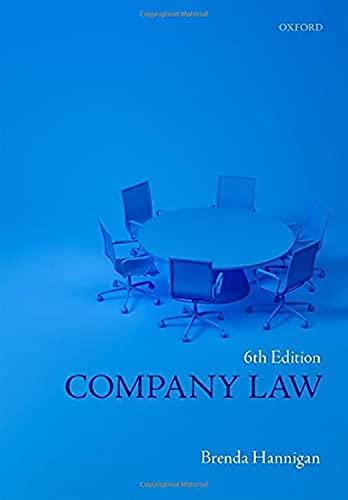Answered step by step
Verified Expert Solution
Question
1 Approved Answer
Instructions This class, we've worked on analyzing police conduct in stages: Determine what police conduct triggered Fourth Amendment protections (in our case, when the search
Instructions This class, we've worked on analyzing police conduct in stages: Determine what police conduct triggered Fourth Amendment protections (in our case, when the search happened); Determine what information the police officer had at that time; and Determine whether the officer had probable cause. Perform this analysis for one of the following two fact patterns. Please answer questions (1)-(3) separately. Each section should be no longer than a section. Fact Pattern One John Marsh, a federal narcotics agent, was stationed in Denver and regularly worked with James Hereford, a paid informant. On September 3, 1956, Hereford told Marsh that James Draper had recently moved to Denver and was dealing drugs. Four days later, Hereford informed Marsh that Draper had gone to Chicago to pick up heroin and would be returning by train on either the morning of September 8 or 9. Hereford also provided a detailed description of Draper and the bag he would likely be carrying. On September 9, Marsh and a Denver police agent saw a person exactly matching that description exit a train from Chicago. Marsh and the police officer stopped him and arrested him. In his pocket they found two envelopes containing heroin, and they found a syringe in his bag. When was the first police conduct that triggered 4A protection? That is, when did conduct rise to the level of a search? What information did the police know at that time? Based on that information, did the police have probable cause? Fact Pattern Two In December 1992, Detective Pautz of the Milwaukee Sheriff's Department was conducting drug interdiction when he noticed a 1981 two door Oldsmobile with California plates. Pautz radioed his dispatcher to check the registration of the car, and he ran the name of the owner, Miguel Ledesma Ornelas, through the Narcotics and Dangerous Drugs Information System (NADDIS). NADDIS reported that Ornelas was a heroin dealer. Based on this information, Detective Pautz pulled the vehicle over. Two more officers arrived on the scene. An officer asked Ornelas if he had any contraband in the car, and Ornelas responded negatively. Detective Hurrle requested permission to search the car, and Ornelas consented. Deputy Luedke searched the car and noticed a loose door panel with a rusty screw. Deputy Luedke removed the panel and found two kilograms of cocaine. When was the first police conduct that triggered 4A protection? That is, when did conduct rise to the level of a search? What information did the police know at that time? Based on that information, did the police have probable cause
Step by Step Solution
There are 3 Steps involved in it
Step: 1

Get Instant Access to Expert-Tailored Solutions
See step-by-step solutions with expert insights and AI powered tools for academic success
Step: 2

Step: 3

Ace Your Homework with AI
Get the answers you need in no time with our AI-driven, step-by-step assistance
Get Started


